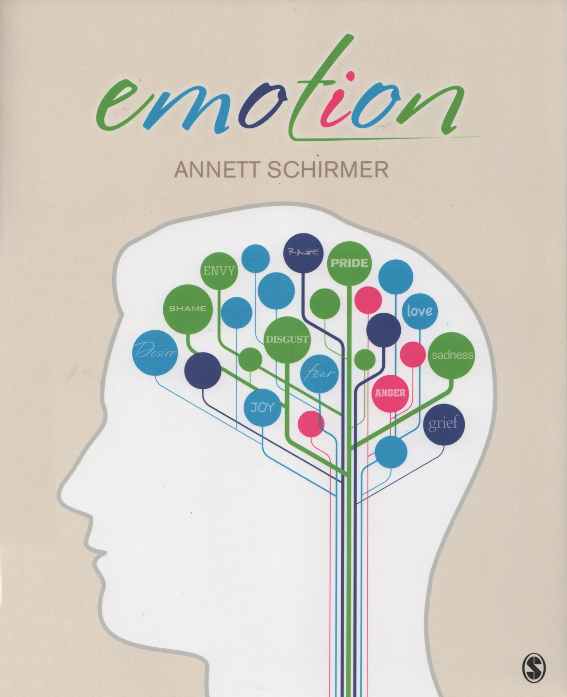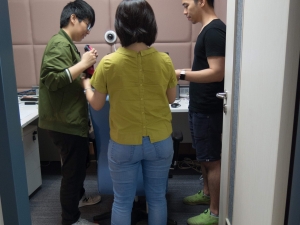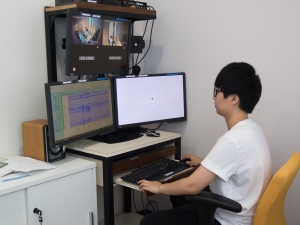
Welcome to the BBL
The Brain and Behaviour Lab (BBL) is home to CUHK psychology staff and students with an interest in the brain and its role for human and non-human animal behavior. Research areas include interval timing, interpersonal communication, decision making, music, emotions and memory. These are explored using functional neuroimaging techniques such as electroencephalography (EEG), optical imaging (fNIRS/EROS), and functional magnetic resonance imaging (fMRI). Additional insight are sought through assessing autonomic (e.g., heart rate) and hormonal markers (e.g., estrogen) as well as subject/participant behavior (e.g., accuracy/reaction times).
If you are interested in joining our lab as a participant or volunteer research assistant, please contact Annett Schirmer (schirmer@cuhk.edu.hk) or Trevor Penney (penney@cuhk.edu.hk), or call the laboratory phone number 39434247.
Current Research
What feels good? In a collaboration with textile designer Sophie Horrocks and Professor Darwin Lau, our lab explores the pleasure associated with touch from different materials such as plastic, denim, paper or velvet. One goal is to see what aspects of the material correlate with subjective reports of pleasure and whether these correlations differ for C-tactile appropriate (i.e., stroking speed between 1 - 10 cm/s) and inappropriate touch (e.g., stroking speed < 1 cm/s). C-tactile afferents can be found in hairy skin and seem to underpin our appreciation for affectionate social touch.
Principle Investigator

Education
| Ph.D. in Cognitive Neuroscience | 2002 | University of Leipzig, Germany |
| Bachelor Degree in Psychology | 1999 | University of Leipzig, Germany |
Professional Experience
| 2017 - present | Full Professor, Department of Psychology, The Chinese University of Hong Kong |
| 2009 - 2016 | Associate Professor, Department of Psychology, National University of Singapore |
| 2006 - 2009 | Assistant Professor, Department of Psychology, National University of Singapore |
| 2005 - 2006 | Assistant Professor, Department of Psychology, University of Georgia, USA |
| 2002 - 2005 | Researcher, Max Planck Institute for Human Cognitive and Brain Sciences, Germany |

Annett Schirmer authored a textbook on emotions. The book presents classical and modern emotion theories and reviews relevant insights from behavioral, physiological, and neuroscientific research in human and non-human animals. The book is available here. Sage Publications, Inc. ISBN: 9781452226255.
Research Publications
Schirmer, A., Ng, T., & Ebstein, R. (in press). Vicarious social touch biases gazing at faces and facial emotions. Emotion.
Schirmer, A. & Gunter, T.C. (2017). The right touch: Stroking of CT-innervated skin promotes vocal emotion processing. Cognitive, Affective, and Behavioral Neuroscience. doi: 10.3758/s13415-017-0537-5.
Schirmer, A. & Gunter, T.C. (2017). Temporal signatures of processing voiceness and emotion in sound. Social, Cognitive, and Affective Neurosciences, 12, 902-909.
Schirmer, A. & Adolphs, R. (2017). Emotion perception from face, voice and touch: Comparison and Convergence. Trends in Cognitive Sciences, 21, 216-228.
Liu, S., Vanderhasselt, M.-A., Zhou, J., Schirmer, A. (2016). Better not to know: Emotion regulation fails to benefit from affective cuing. Frontiers in Human Neuroscience, 25.
Brauer, J., Xiao, Y., Poulain, T., Friederici, A.D., & Schirmer, A. (2016). Frequency of maternal touch predicts resting activity and connectivity of the developing social brain. Cerebral Cortex, 26, 3544-52.
Reece, C.E., Ebstein, R., Cheng, X., Ng, T., & Schirmer, A. (2016). Maternal touch predicts social orienting in young children. Cognitive Development, 39, 128-140.
Schirmer, A. (2016). Editorial of the Special Issue on Emotion and Time Time Perception: In the Heat of the Moment. Timing & Time Perception, 4, 1-6.
Schirmer, A., Ng., T., Escoffier, N., & Penney, T.B. (2016). Emotional voices distort time: behavioral and neural correlates. Timing & Time Perception, 4, 79-98.
Swee, G. & Schirmer, A. (2015). On the Importance of Being Vocal: Saying “Ow” Improves Pain Tolerance. The Journal of Pain, 16, 326-334.
Escoffier, N., Herrmann, C.S., & Schirmer, A. (2015). Auditory rhythms entrain visual processes in the human brain: Evidence from evoked oscillations and event-related potentials. NeuroImage, 111, 267-276.
Schirmer, A., Reece, C., Zhao, C., Ng, E., Wu, E., & Yen, S.-C. (2015). Reach out to one and you reach out to many: Social touch affects third party observers. British Journal of Psychology, 106, 107-32.
Schirmer, A. (2013). Sex differences in emotion. In: Handbook of Human Affective Neuroscience. J. Armony & P. Vuilleumier (Eds.) Oxford University Press, 591-610.
Escoffier, N., Zhong, J., Schirmer, A., & Qiu, A. (2013). Emotions in voice and music: same code, same effect? Human Brain Mapping, 34, 1796-1810.
Ferdenzi, C., Delplanque, S., Barbosa, P., Court, K., Guinard, J.-X., Guo, T., Roberts, S.C., Schirmer, A., Porcherot, C., Cayeux, I., Sander, D., Grandjean, D. (2013). Affective semantic space of scents. Towards a universal scale to measure odor-related feelings. Food Quality and Preference, 30, 128-138.
Schirmer, A. Chen, C.-B., Ching, A., Tan, L., & Hong, R.Y. (2013). Vocal emotions influence verbal memory: Neural correlates and inter-individual differences. Cognitive, Affective and Behavioral Neuroscience, 13, 80-93.
Ferdenzi, C., Roberts, C., Schirmer, A., Delplanque, S., Porcherot-Lassallette, C., Cayeux, I., Velazco, M.-I., Sander, D., Scherer, K.R., & Grandjean, D. (2013). Variability of Affective Responses to Odors: Culture, Gender and Olfactory Knowledge. Chemical Senses, 38, 175-186.
Schirmer, A., Fox, M., & Grandjean, D. (2012). On the spatial organization of sound processing in the human temporal lobe: A meta-analysis. Neuroimage, 63, 137-147.
Schirmer, A., Soh, Y.H., Penney, T.B., & Wyse, L. (2011). Perceptual and conceptual priming of environmental sounds. Journal of Cognitive Neuroscience, 23, 3241-53.
Ferdenzi, C., Schirmer, A., Roberts, C., Delplanque, S., Porcherot-Lassallette, C., Cayeux, I., Velazco, M.-I., Sander, D., Scherer, K.R., & Grandjean, D. (2011). Affective dimensions of odor perception: A comparison between Swiss, British and Singaporean populations. Emotion, 11, 1168-81.
Schirmer, A. (2011). How emotions change time. Frontiers in Integrative Neuroscience, 5:58.
Min, C.S. & Schirmer, A. (2011). Perceiving verbal and vocal emotions in a second language. Cognition and Emotion, 25, 1376-92.
Schirmer, A., Vijayakumar, R., Teh, K.S., Nithianantham, D., Escoffier, N., & Cheok, A.D. (2011). Squeeze me, but don’t tease me: Human and mechanical touch enhance visual attention and emotion discrimination. Social Neuroscience, 6, 219-30.
Escoffier, N., Yeo, D.J.S., & Schirmer, A. (2010). Unattended musical beats enhance visual processing. Acta Psychologica, 135, 12-16.
Schirmer, A. (2010). Mark my words: Tone of voice changes affective word representations in memory. PLoS One, e9080.
Schirmer, A. & Escoffier, N. (2010). Emotional MMN: Anxiety and heart rate correlate with the ERP signature for auditory change detection. Clinical Neurophysiology, 121, 53-59.
Schirmer, A. & Li, Q. (2009). Electrophysiological correlates of vocal emotional processing in male and female listeners. In: Linguistic Insights 97. M. Gotti (Ed.) Peter Lang Publishing Group: Bern, 193-210.
Schirmer, A., Escoffier, N., Li, Q.Y., Li, H., Strafford-Wilson, J., & Li, W.-I. (2008). What grabs his attention but not hers? Estrogen correlates with neurophysiological measures of vocal change detection. Psychoneuroendocrinology, 33, 718-727.
Schirmer, A., Escoffier, N., Zysset, S., Koester, D., Striano, T., & Friederici, A.D. (2008). When vocal processing gets emotional: On the role of social orientation in relevance detection by the human amygdala. NeuroImage, 40, 1402-1410.
Schirmer, A., Escoffier, N., & Friederici, A.D. (2008). Out of the spotlight: Neurophsyiological mechanisms underlying the perception of unattended vocal expressions. In: Proceedings of the 4th Speech Prosody Conference, Campinas, Brazil, 211-216.
Schirmer, A. & Simpson, E. (2008). Brain correlates of vocal emotional processing in men and women. In: Emotions in the Human Voice (Volume 1, Foundations). K. Izdebski (Ed.) Plural Publishing: San Diego, 76-86.
Schirmer, A., Escoffier, N., & Simpson, E. (2007). Listen up! Processing of intensity change differs for vocal and nonvocal sounds. Brain Research, 1176, 103-112.
Schirmer, A. (2007). Processing words in context: Insights from event-related potentials and functional magnetic resonance imaging. In: Communicating Skills of Intention. T. Sakamoto (Ed.) Hituzi Shobo: Tokyo, 165-174.
Schirmer, A., Lui, M., Escoffier, N., Maess, B., Chan, M., & Penney, T.B. (2006). Task and sex modulate the brain response to emotional incongruity in Asian listeners. Emotion, 6, 406-417.
Schirmer, A. & Kotz, S.A. (2006). Beyond the right hemisphere: Brain mechanisms mediating vocal emotional processing. Trends in Cognitive Sciences, 10, 24-30.
Schirmer, A., Kotz, S.A., & Friederici, A.D. (2005). On the role of attention for the processing of emotions in speech: Sex differences revisited. Cognitive Brain Research, 24, 442-452.
Schirmer, A., Striano, T., & Friederici, A.D. (2005). Sex differences in the pre-attentive processing of vocal emotional expressions. Neuroreport, 16, 635-639.
Schirmer, A., Tang, S.L., Penney, T.B., Gunter, C.T., & Chen, H.C. (2005). Brain responses to segmentally and tonally induced semantic violations in Cantonese. Journal of Cognitive Neuroscience, 17, 1-12.
Schirmer, A. (2004). Timing speech: A review of lesion and neuroimaging findings. Cognitive Brain Research, 21, 269-287.
Schirmer, A., Zysset, S., Kotz, S.A., & von Cramon, D.Y. (2004). Gender differences in the activation of inferior frontal cortex during emotional speech perception. NeuroImage, 21, 1114-1123.
Schirmer, A. & Kotz, S.A. (2003). ERP evidence for a gender specific Stroop effect in emotional speech. Journal of Cognitive Neuroscience, 15, 1135-1148.
Alter, K., Rank, E., Kotz, S.A., Töpel, U., Besson, M., Schirmer, A., & Friederici, A.D. (2003). Affective encoding in the speech signal and in event-related brain potentials. Speech Communication, 40, 61-70.
Schirmer, A., Kotz, S.A., & Friederici, A.D. (2002). Sex differentiates the role of emotional prosody during word processing. Cognitive Brain Research, 14, 228-233.
Schirmer, A. & Kotz, S.A. (2002). Sex differentiates the Stroop-effect in emotional speech: ERP evidence. In: Proceedings of the 1st Speech Prosody Conference, Aix-en-Provence, France, 631-634.
Schirmer, A., Alter, K., Kotz, S.A., & Friederici, A.D. (2001). Lateralization of prosody during language production: A lesion study. Brain and Language, 76, 1-17.
Alter, K., Rank, E., Kotz, S.A., Toepel, U., Besson, M., Schirmer, A., & Friederici, A.D. (2000). Accentuation and emotions – two different systems? In: Proceedings of the ISCA Workshop on Speech and Emotion, Belfast, Northern Ireland, 138-142.
Alter, K., Schirmer, A., Kotz, S.A., & Friederici, A.D. (1999). Prosodic phrasing and accentuation in speech production of patients with right hemisphere lesions. In: Proceedings of the 6th European Conference on Speech Communication and Technology, Budapest, Hungary, 223-226.

Education
| Ph.D. | 1997 | Columbia University, New York, US |
| M.Sc. | 1993 | Memorial University of Newfoundland, St. John's, Canada |
| B.Sc. | 1990 | Memorial University of Newfoundland, St. John's, Canada |
Professional Experience
| 2017 - present | Full Professor, Department of Psychology, The Chinese University of Hong Kong |
| 2006 - 2017 | Associate Professor, Department of Psychology, National University of Singapore |
| 2005 - 2006 | Associate Professor, Department of Psychology, The Chinese University of Hong Kong |
| 2000 - 2005 | Assistant Professor, Department of Psychology, The Chinese University of Hong Kong |
| 1997 - 2000 | Post-doctoral Fellow, Max Planck Institute of Cognitive Neuroscience, Germany |
Publications
Zhang, X., Ju, H., Penney, T.B., VanDongen, A.M.J. (2017). Familiarity detection is an intrinsic property of cortical microcircuits with bidirectional synaptic plasticity.eNeuro 4 (3), ENEURO. 0361-16.2017
Mehta, K., Hasnain, A., Zhou, X., Luo, J., Penney, T.B., Chen, N. (2017). Spred spectrum time-resolved diffuse optical measurement system for enhanced sensitivity in detecting human brain activity.Journal of Biomedical Optics 22 (4), 045005-045005.
Ananyev, E, Penney, T.B., Hsieh, P.J.B. (2017). Separate requirements for detection and perceptual stability of motion in interocular suppression. Scientific Reports 7.
Allman, M.J., Penney, T.B., Meck, W.H. (2016). A brief history of "The psychology of time perception". Timing & Time Perception 4 (3), 299-314.
Schirmer, A., Ng., T., Escoffier, N., & Penney, T.B. (2016). Emotional voices distort time: behavioral and neural correlates. Timing & Time Perception, 4, 79-98.
Penney, T.B., Cheng, X., Leow, Y.L., Bay, A.W.Y., Wu, E., Herbst, S.K., Yen, S.C. (2016). Saccades and subjective time in seconds range duration reproduction.Timing & Time Perception 4 (2), 187-206.
Kononowicz, T.W. & Penney, T.B. (2016). The contingent negative variation (CNV): timing isn't everything. Current Opinion in Behavioral Sciences 8, 231-237.
Herbst, S.K., Chaumon, M., Penney, T.B., Busch, N.A. (2015). Flicker-induced time dilation does not modulate EEG correlates of temporal encoding. Brain Topography, 28, 559-569.
Ng, K. K., & Penney, T. B. (2014). Probing interval timing with scalp-recorded electroencephalography (EEG). In H. Merchant & V. de Lafuente. (Eds.), Neurobiology of Interval Timing. Springer Verlag, 2013. This chapter also appeared as an article in Advances in Experimental Medicine and Biology.
Penney, T.B., Brown, G.D.A., & Wong, J.K.L. (2014). Stimulus spacing effects in duration perception are larger for auditory stimuli: Data and a model. Acta Psychologica, 147, 97-104.
Cheng, R.K., Jesuthasan, S., Penney, T.B. (2014). Zebrafish forebrain and temporal conditioning. Philosophical Transactions of the Royal Society B, 369, 20120462.
Ng, K. K., & Penney, T. B. (2014). Probing interval timing with scalp-recorded electroencephalography (EEG). Advances in Experimental Medicine and Biology, 829, 187-207.
Penney, T.B., Yim, E.N.K., & Ng, K.K. (2014). Distractor expectancy effects on interval timing. Timing & Time Perception, 2, 1-19.
Schirmer A, Seow CS, Penney TB (2013) Humans Process Dog and Human Facial Affect in Similar Ways. PLoS ONE 8(9): e74591. doi:10.1371/journal.pone.0074591
Tse, C.Y., Rinne, T., Ng, K.K., & Penney, T.B. (2013). The functional role of the frontal cortex in pre-attentive auditory change detection. NeuroImage, 83, 870-879.
Cheng, R.K., Jesuthasan, S., Penney, T.B. (2011). Time for zebrafish. Frontiers in Integrative Neuroscience, 5: 40.
Lui, M.A., Penney, T.B., Schirmer, A. (2011). Emotion effects on timing: Attention versus pacemaker accounts. PLoS ONE, 6.
Ng, K.K., Tobin, S., & Penney, T.B. (2011). Temporal accumulation and decision processes in the duration bisection task revealed by contingent negative variation. Frontiers in Integrative Neuroscience. 5:77 doi: 10.3389/fnint.2011.00077
Schirmer, A., Soh, Y.H., Penney, T.B., Wyse, L. (2011). Perceptual and conceptual priming of environmental sounds. Journal of Cognitive Neuroscience, 23, 3241-53.
Van Rijn, H., Kononowicz, T.D., Meck, W.H., Ng, K.K., Penney, T.B. (2011). Contingent negative variation and its relation to time estimation: a theoretical evaluation. Frontiers in Integrative Neuroscience, 5: 91.
Cheung, H., Chung, K.K.H., Wong, S.W.L., McBride-Chang, C.M., Penney, T.B., Ho, C.S.H. (2010). Speech perception, metalinguistic awareness, reading, vocabulary in Chinese-English bilingual children. Journal of Educational Psychology, 102, 367-380.
Ali, F. & Penney, T.B. (2010). The cultured brain: Interplay of genes, brain, and culture. In M. Bond (Ed.), The Handbook of Chinese Psychology 2nd ed. (pp. 31-36). Oxford: Oxford University Press.
Lee, A., Mathuru, A.S., Teh, C., Kibat, C., Korzh, V., Penney, T.B., Jesuthasan, S. (2010). The habenula prevents helpless behavior in larval zebrafish. Current Biology, 20, 2211-2216.
Penney, T.B., Vaitilingam L., Liu, S. (2010). Implicit Timing. In Srinivasan, N., Kar, B.R., & Pandey, J. (Eds.), Advances in Cognitive Science: Volume 2. Sage.
Lin, P.Y., Lin, S.I., Penney, T., Chen, J.J.J. (2009). Applications of near infrared spectroscopy and imaging for motor rehabilitation in stroke patients. Journal of Medical and Biological Engineering, 29, 210-221.
Cheung, H., Chung, K.K.H., Wong, S.W.L., McBride-Chang, C., Penney, T.B., Ho, C.S.H. (2009). Perception of tone and aspiration contrasts in Chinese children with dyslexia. The Journal of Child Psychology and Psychiatry, 50, 726-733.
Ng, K.K., Yip, P.P.Y., Soh, Y.H., Penney, T.B. (2009). Duration magnitude and memory resource demand. NeuroQuantology, 7, 128-137.
Cheng, R.K., Scott, A.C., Penney, T.B., Williams, C.L., & Meck, W.H. (2008). Prenatal choline supplementation differentially modulates timing of auditory and visual stimuli in aged rats. Brain Research, 1237, 167-175.
Meck, W.H., Penney, T.B., & Pouthas, V. (2008). Cortico-striatal representation of time in animals and humans. Current Opinion in Neurobiology, 18, 145-152.
Penney, T.B. & Vaitilingam L. (2008). Imaging Time. In S. Grondin (Ed.), Psychology of Time (pp. 261-294). Bingley, UK: Emerald.
Penney, T.B., Gibbon, J., Meck, W.H. (2008). Categorical scaling of duration bisection in pigeons (Columba livia), mice (Mus musculus), and humans (Homo sapiens). Psychological Science, 19, 1103-1109.
Chung, K.K.H., McBride-Chang, C.A., Wong, S.W.L., Cheung, H., Penney, T.B., & Ho, C.S.H. (2008). The role of visual and auditory temporal processing for Chinese children with developmental dyslexia. Annals of Dyslexia, 58, 15-35.
Tse, C.Y., & Penney, T.B. (2008). On the functional role of temporal and frontal cortex activation in passive detection of auditory deviance. NeuroImage, 41, 1462-1470.
Tse, C.Y., & Penney, T.B. (2007). Optical imaging of cortical activity elicited by unattended temporal deviants. IEEE Engineering in Medicine and Biology Magazine, 26, 52-58.
Droit-Volet, S., Penney, T.B., Meck, W.H. (2007). Sensory modality and time perception in children and adults. Behavioral Processes, 74, 244-250.
Penney, T.B., Wong, S., Ng, K.K., & McBride-Chang, C.A. (2007). Speeded naming and dyslexia. In T. Sakamoto (Ed.), Communicating Skills of Intention (pp. 75-90). Tokyo, Japan: Hituzi Shobo.
McBride-Chang, C, Hua, S., Ng, J.Y.L., Meng, X., & Penney, T.B. (2007). Morphological Structure Awareness, Vocabulary, and Reading. In Wagner, R.K., Muse, A., & Tannenbaum, K. (Eds.), Vocabulary Acquisition: Implications for Reading Comprehension (pp. 104-122). New York, NY: Guilford Press.
Schirmer, A., Lui, M., Maess, B., Eiscoffier, N., Chan, M., & Penney, T.B. (2006). Task and sex modulate the brain response to emotional incongruity in Asian listeners. Emotion, 6, 406-417.
Tse, C.Y., & Penney, T.B. (2006). Pre-attentive timing of empty intervals is from marker offset to onset. Psychophysiology, 43, 172-179.
Tse, C.Y., Tien, K.R., & Penney, T.B. (2006). Event–related optical imaging reveals the temporal dynamics of right temporal and frontal cortex activation in pre-attentive change detection. NeuroImage, 29, 314-320.
Penney, T.B., Leung, K.M, Chan, P.C., Meng, X., & McBride-Chang, C.A. (2005). Poor readers of Chinese respond slower than good readers in phonological, rapid naming, and interval timing tasks. Annals of Dyslexia, 55, 9-27.
Penney, T.B., Meck, W.H., Roberts, S.A., Gibbon, J., & Erlenmeyer-Kimling, L. (2005). Attention mediated interval timing deficits in individuals at high risk for schizophrenia. Brain and Cognition, 58, 109-118.
Penney, T.B., & Tourret, S. (2005). Les effets de la modalite sensorielle sur la perception du temps. Psychologie Française, 50, 131-143.
Melgire, M., Ragot, R., Samson, S., Penney, T.B., Meck, W.H., & Pouthas, V. (2005). Auditory/visual duration bisection in patients with left or right medial temporal lobe resection. Brain and Cognition, 58, 119-124.
Nessler, D., Mecklinger, A., & Penney, T.B. (2005). Perceptual fluency, semantic familiarity, and recognition-related familiarity: An electrophysiological exploration. Cognitive Brain Research, 22, 265-288.
Schirmer, A., Tang, S.L., Penney, T.B., Gunter, C.T., & Chen, H.C. (2005). Brain responses to segmentally and tonally induced semantic violations in Cantonese, Journal of Cognitive Neuroscience, 17, 1-12.
Penney, T.B. (2004). Electrophysiological correlates of interval timing in the Stop-Reaction Time task. Cognitive Brain Research, 21, 234-249.
Penney, T.B., Maess, B., Busch, N., Derrfuss, J., & Mecklinger, A. (2003). Cortical activity reduction with stimulus repetition: An MEG analysis. Cognitive Brain Research, 16, 226-231.
Penney, T.B. (2003). Modality differences in interval timing: Attention, clock speed, and memory. In W.H. Meck (Ed.), Functional and Neural Mechanisms of Interval Timing (pp. 209-233). Boca Raton, FL: CRC Press.
Penney, T.B., Mecklinger, A., & Nessler, D. (2001). Repetition related ERP effects in a visual target detection task. Cognitive Brain Research, 10, 239-250.
Nessler, D., Mecklinger, A., & Penney, T.B. (2001). Event related brain potentials and illusory memories: The effects of differential encoding. Cognitive Brain Research, 10, 283-301.
Penney, T.B., Gibbon, J., & Meck, W.H. (2000). Differential effects of auditory and visual signals on clock speed and temporal memory. Journal of Experimental Psychology: Human Perception and Performance, 26, 1770-1787.
Penney, T.B., Mecklinger, A., Hilton, H.J., & Cooper, L.A. (2000). Priming and recognition of novel 3D objects: Guidance from event-related potentials. Cognitive Science Quarterly, 1, 69-92.
Rakitin, B.C., Gibbon, J., Penney, T.B., Malapani, C., Hinton, S.C. & Meck, W.H. (1998). Scalar expectancy theory and peak-interval timing in humans. Journal of Experimental Psychology: Animal Behavior Processes. 24, 15-33.
Penney, T.B., Allan, L., Meck, W.H., & Gibbon, J. (1998). Memory mixing in duration bisection. In Rosenbaum, D.A., & Collyer, C.E. (Eds.) Timing of Behavior: Neural, Computational, and Psychologica Perspectives (pp. 165-193). Cambridge: MIT Press.
Penney, T.B., Holder, M.D., & Meck, W.H. (1996). Clonidine-induced antagonism of norepinephrine modulates the attentional processes involved in peak-interval timing. Experimental and Clinical Psychopharmacology, 4, 1-11.
Postdoctoral Fellow

| I obtained my Ph.D. from the National University of Singapore in 2017. I have an interest in understanding the interaction between physiology and behaviour. For my doctoral thesis I used EEG to investigate the role of touch on socio-emotional processing. Currently, I continue working on touch research and perform event-related potential and time-frequency analyses of EEG data. |
|
Email: mtwijaya@cuhk.edu.hk Tel: 3943 4247 |
Graduate Students

I obtained my Master’s degree from South China Normal University in 2018 where I pursued structural and functional MRI techniques to study the neural mechanism of cognitive function in health and disease. My PhD work at CUHK focuses on the effect of external rhythms on social perception.
Email:
Tel: 6876 2012

Education:
Mphil student in Psychology, CUHK Present
BA in Psychology, UC Berkeley 2017
Email: ryancst@link.cuhk.edu.hk
Tel: 3943 4247
Research Interests
Cross-modal time perception: I am currently working on how people perceive time and how time perception is affected by different sensory systems.
Research Assistants

Education: BSSc in Psychology, HKSYU
Email: nsykun@cuhk.edu.hk
Tel: 3943 4247
Research Interests
| Neuropsychology |
| I am fascinated by the brain and how it enables human functioing. In this context, I am particularily interested in how brain injuries alter thoughts, personality, and behavior. |
| Time Perception |
| I am interested in the passage of time judgments and how it relates to emotions. |
Conference Presentation
|
Kun, S.Y., & Zhou, D. H. (June, 2016). Effects of Temporal Orienting and Gender on Time Perception, Poster presented at The Global Conference on Education and Psychology, Hong Kong |

Yiu Chung majored in Psychology at CUHK. His interest is in Data Science and Statistical Learning. He believes theories in Statistical Learning will one day allow us to reverse-engineer human emotion and cognition, thereby creating machines that are more like us.
Email: yiuchungwong@cuhk.edu.hk
Tel: 3943 4247







